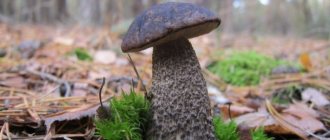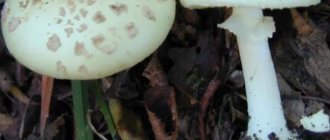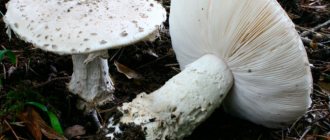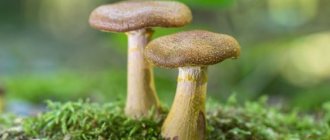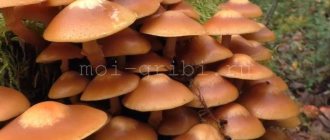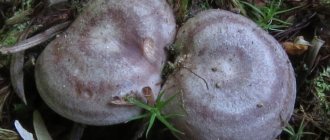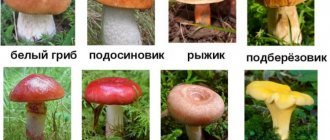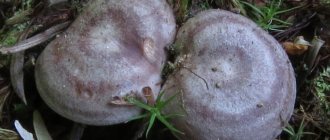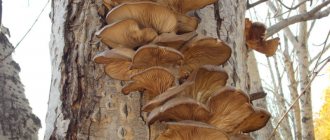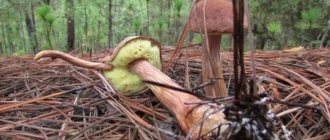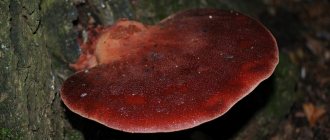The forests of Russia are full of bizarre macromycetes. Due to its unusual appearance - resemblance to deer antlers - the mushroom of the department of higher fungi of Basidiomycetes received its name deer horns. There are several other names for this fruit - horned grass, coral hedgehog, coral, etc.
Having encountered a horned mushroom in the forest, not every mushroom picker will dare to cut it off. This is due to its rather exotic appearance. This species is considered edible, and therefore, before being listed in the Red Book, it could be collected and prepared in a wide variety of ways.
Types of these mushrooms, appearance
In addition to the name mother-in-law's tongue, this mushroom is also called ox mushroom, bovine mushroom, meat red mushroom, wolf mushroom or common pecheritsa. This representative of the Fistulinaceae family has a large fruiting body, which over time acquires a tongue-like or leaf-like shape. Pecheritsa has a smooth, shiny surface, the color of which varies from orange to light red. The stalk of mother-in-law's tongue has a rigid structure. It is painted dark red and serves to attach the mushroom to the surface of the trees.
Liverworts also differ from other species in their hymenophores, which are represented by separate tubes. They have a beige color, which, if touched, immediately changes to yellow.
Mother-in-law's tongue mushroom has very elastic flesh that is pink in color. The dark red veins on it form a beautiful marble pattern. If this pulp is cut, the mushroom will resemble a red piece of meat or liver, which is facilitated by the release of a specific juice, similar to ichor.
Briefly about pluteuses
The fruits of the Pluteaceae family are in most cases saprotrophic and primarily live on decaying wood.
According to the structure of their bodies, they are hat-footed and lamellar, free (there are no remains of a veil). In practice, they are of rather little importance - some species are still edible and can be collected, but the size and inconspicuous appearance of pluteuses sometimes hide them from view, and the hallucinogenic psilocybin and psilocin they contain make some species completely dangerous. But nevertheless, plutiuses perform one important role in the kingdom of living nature: being saprotrophs, they help decompose dead wood, which makes it possible to get rid of most forest parasites.
The composition of pluteus species has been little studied, their average number ranges from 140 to 300 species, but it is worth considering that not all mycologists will agree even with this range.
Where, when and how does it grow
Mother-in-law's tongue usually grows on oak or chestnut trees; very often it can also be found on dried mossy stumps. Warm areas are considered the ideal place for it. Thus, in the forest-steppe and steppe, the liver fungus can be found in oak forests (here groundwater is close to the surface), and in the northern regions it settles in the highlands.
Application
Mother-in-law's tongue (the mushroom whose photo you see in the article) can rarely be found on the shelves of regular stores. However, due to the fact that it contains a large amount of protein and vitamins, many use it as the main component of various dishes. In addition, many also believe in the healing properties of this mushroom.
In cooking
Mother-in-law's tongue is a conditionally edible mushroom, so it is best to use younger specimens for preparing various dishes. You can use them to make various vegetarian cutlets, roasts or kebabs. Liverwort is also often added to salads, fried, boiled, or added to vegetable stews.
In medicine
In folk medicine, mother-in-law's tongue is used to increase immunity and fight various infections and viruses. This mushroom is also known as an excellent antioxidant that can cleanse the body of waste and toxins. The main thing is to pay attention to a number of contraindications so as not to further harm your body.
Characteristic features of the variety
The botanical name of the coral is Ramaria yellow, which belongs to the family Rogataceae. The shape of the cattail resembles the branched antlers of a deer or underwater coral.
Description of deer horns and photo of the mushroom
The photo clearly shows that the ground part of the deer horn mushroom is very branched.
Its color depends on several factors:
- habitats;
- climate features;
- age.
The branches can be beige, light brown, light yellow, orange or purple. Basically, the height of the fruiting body does not exceed 7 cm, but the width varies from 15 to 30 cm. When pressing on the fruit, a light brown tint appears. When cut, the hornet has a marble-yellow color. The mushroom has a pleasant aroma that resembles the smell of freshly cut grass.
Morphology
The tops of old cattails accumulate substances that give it a bitter taste. Therefore, the upper branches are not used for food. The mushroom itself differs in taste from its relatives, because it does not have a pronounced mushroom taste. Raw cattails are quite elastic, but after cooking they become somewhat harsh.
The hedgehogs are very similar to the golden-yellow ramaria. The differences between these specimens can only be seen under a microscope. Nothing bad would happen if you cut the double, because both ramaria are edible.
Place of distribution
This species is extremely rare. You can find such a treasure in the regions of the Far East, Karelia, the Caucasus, Western and Eastern Siberia, as well as in the Crimea. Most residents of the central part of our country are not even aware of the existence of such “forest bread”.
This is due to the characteristics of the growth of horned ones. They live in damp and shaded places. Most often you can find them in pine or deciduous forests, where the most valuable specimens grow.
Edible or inedible
Hornworts are both edible and inedible. In this regard, you should carefully study the yellow ramaria so that you can distinguish it from other relatives. All hedgehog lookalikes are moderately poisonous or conditionally edible, so eating them cannot be fatal.
Ramaria yellow is an edible mushroom, but it is important to follow some precautions before consuming it. For preparation, only the base is used, because the twigs have a bitter taste. Overripe fruits are considered unsuitable due to the large accumulation of bitterness.
Harm and contraindications
Mushrooms (mother-in-law’s tongue, the photo and description of which you see, are no exception) are a product that should be consumed with extreme caution. So, before eating liverwort, you need to make sure there are no contraindications. The main ones include:
- children under 12 years of age;
- chronic diseases;
- gout;
- problems with the gastrointestinal tract;
- pregnancy;
- individual intolerance;
- elderly age.
How to cook liverwort mushroom: recipes for everyday dishes
Basically, the liver mushroom is fried; this cooking method is the easiest. There are quite a lot of recipes for preparing liver mushroom, so you can eat mother-in-law’s tongue often and not be afraid of monotony.
How to fry liver mushroom with onions
A simple and budget-friendly recipe suggests frying mushroom pulp with onions. The algorithm looks like this:
- pre-boiled liverwort is cut into small pieces;
- grease a heated frying pan with oil and pour mushroom pulp and 300 g of onions, cut into half rings, onto it;
- The liverwort and onion are fried for 20 minutes;
- a couple of minutes before readiness, add 2 bay leaves, salt and pepper to your taste.
The finished dish goes well with pasta and potatoes.
The easiest way is to fry an ordinary liverwort with onions and herbs
How to fry liver mushrooms with sour cream
One of the most delicious recipes suggests frying the liverwort with sour cream. The recipe looks like this:
- fresh mushrooms are cleaned, soaked and boiled for 20 minutes;
- boiled mushrooms are washed in cold water and cut into thin strips;
- Fry the mushroom pulp in a frying pan for about 15 minutes;
- then add chopped onions and fry until the onions turn golden.
After this, 2 tablespoons of sour cream in equal quantities are diluted with water and poured over mushrooms and onions, salt and pepper to taste. The dish needs to simmer for about 5 minutes, after which a little finely chopped dill is added to the mushrooms and sour cream, stirred, covered with a lid and removed from the stove.
How to cook fried liverwort mushrooms with potatoes
It turns out very tasty if you cook liver mushroom in combination with crumbly potatoes:
- Boiled mushrooms in the amount of 1 kg are cut into thin slices.
- Cut 500 g of boiled potatoes and 2 onions into cubes.
- The mushroom pulp is fried in a frying pan until the moisture evaporates.
- Then add 2 large tablespoons of high-quality sunflower or olive oil, place onions and potatoes in a frying pan and fry the ingredients together until golden brown.
Salt and pepper the finished dish to taste; you can also add herbs and a little sour cream to the liverwort a couple of minutes before the liverwort is ready.
Liverwort goes well with potatoes and vegetables
Making liver mushroom cutlets
From mushroom pulp you can make nutritious cutlets that are in no way inferior to meat cutlets in taste. To do this you need:
- boil the liverwort and then pass it through a meat grinder along with 1 large onion;
- add a raw egg, a little flour and salt to taste to the minced meat;
- Make regular cutlets from a viscous thick mixture and roll them in flour or breading;
- fry in an oiled frying pan until golden brown.
Advice! To improve the taste, you can add a piece of hard cheese or butter to the middle of each cutlet. In the latter case, the cutlets will turn out more tender and juicy.
How to cook stewed liver mushrooms with carrots and cauliflower
Mother-in-law's tongue turns out to be very tasty if you stew it with vegetables. To do this you need:
- boil and fry fresh mushroom pulp in olive oil;
- in a separate frying pan, covered, simmer a couple of large spoons of fresh chopped carrots, no more than 200 g of cauliflower and the same amount of boiled beans, preferably white;
- mix mushrooms and vegetables, then season the hot dish with butter.
You can eat the prepared product together with potatoes or pasta, or you can eat it in its pure form.
You can make tasty and satisfying cutlets from the liver tinder fungus
Mother-in-law's tongue mushroom shashlik recipe
You can make delicious kebab from the nutritious mushroom pulp. The recipe looks like this:
- 500 g of boiled liverworts and 200 g of fresh lard, cut into large cubes;
- 2 large onions, cut into large thick rings;
- the ingredients are threaded onto skewers and fried over coals in the standard way.
Shortly before the kebab is ready, salt and pepper it, you can also add aromatic herbs, your favorite spices, teriyaki sauce or ketchup.
How to cook roast with mushrooms Mother-in-law's tongue
It’s very quick and easy to make a flavorful roast from liverwort. The recipe suggests:
- cut 500 g of boiled liverworts into large pieces and fry in a frying pan over high heat with butter for 10 minutes;
- coarsely chop 200 g of onions and medium carrots;
- add vegetables to the frying pan with the mushroom pulp, also add 4 chopped garlic cloves;
- fry the ingredients for several minutes;
- add a little water to the pan and cover it with a lid;
- simmer the liverwort with vegetables for another 10 minutes.
Then the dish is salted to taste, a little black pepper and coriander are added, and then simmered until the mixture in the frying pan acquires a thick consistency. The finished roast is laid out on plates and decorated with herbs.
Roast liverwort is not inferior in nutritional value to meat dishes
How to distinguish edible from inedible
Mother-in-law's tongue (mushrooms are often similar to each other) out of ignorance can very easily be confused with the bristle-haired tinder fungus. This is a very toxic species that looks almost like a liverwort, but still has its own distinctive features. These include:
- dark red (almost brown) color of the cap;
- the surface of the fruit body covered with small villi;
- brown color of the pulp;
- a fruiting body formed by several caps.
Another inedible counterpart of mother-in-law's tongue is the tuberous tinder fungus. It bears fruit all year round and differs from liverwort in its distinct woody aroma.
Precautionary measures.
It is not recommended to collect and consume any varieties that are similar to pluteum, but are distinguished by the presence of a pronounced aroma and rapid darkening of the pulp.
Edible spittle does not oxidize, and this is its distinguishing characteristic. In addition, you should not collect mushrooms in places that may have previously been subject to chemical contamination or are considered environmentally unfavorable for other reasons. The collected mushrooms must be peeled and kept in water for about 2 hours before cooking.
Preparation and storage
Mother-in-law's tongue is great for drying for the winter, although this will require a little more effort than with other mushrooms:
- Thoroughly clean the liverworts of debris and insects.
- Cut the mushrooms into plastic pieces no thicker than 2 mm.
- Leave the product in the open air for 2 hours, allowing excess moisture to gradually drain.
- Place mushroom pieces on a string and hang them in the fresh air or dry them in the oven.
It is best to store dried mother-in-law's tongue in a paper bag and a cloth bag.
Healing properties
100 grams of mushroom contains the daily requirement of ascorbic acid, sufficient for an adult. It is difficult to find a product that has such a supply of proteins, carbohydrates, minerals, phosphorus, water and vitamin PP, C, D and others.
Healers observing the effects of the mushroom on the human body have come to the conclusion that its use can stop the growth of malignant cells, but, unfortunately, this issue has not been fully studied. But there is no reason not to trust healers. Perhaps, by studying the fungus, scientists will be able to confirm their assumption, and a new cure for cancer will be obtained based on the common liverwort.
All tinder fungi, including mother-in-law's tongue, are recommended for people with metabolic disorders in the body. The unique type of polysaccharides they contain has a beneficial effect on the liver, so the metabolism returns to normal.
